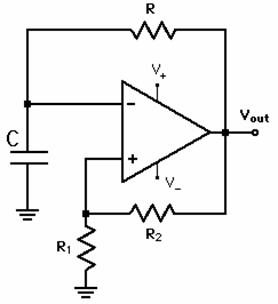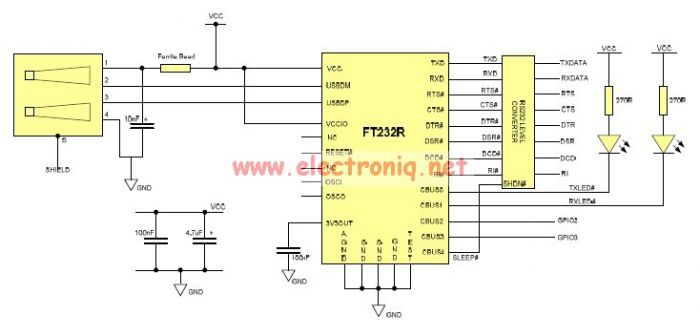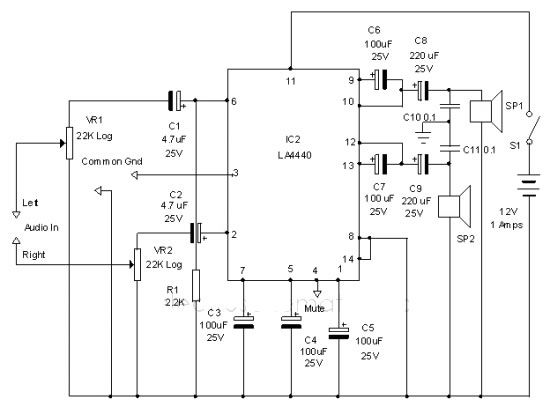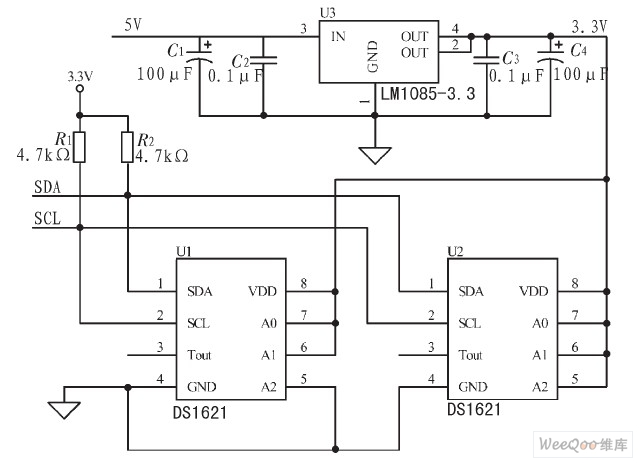
Design Lasers

To create two laser guns for a game, red lasers were mounted in modifiable toy guns that players could hold and shoot with. Small red lasers were sourced from Fry's, which the target photocells can reliably detect as a hit. Toy guns from Walmart were chosen for their compatibility with the lasers and small vibrator motors that provide tactile feedback upon a successful hit. All wiring was executed using phone cable, with one cable running between the console and the guns, split into separate wires to complete the various circuits. The circuit for the gun lasers was developed by disassembling a laser pointer, revealing that its outer casing is wired high while the internal spring is wired low. Two wires were soldered to these points, connecting the outer casing to power. The spring is linked to the drain of an N-channel transistor, with its source connected to ground. The gate is controlled by a C32 board. The guns' trigger switch was already wired, so the switch wires were attached to the C32 board. A resistor was used to pull down the voltage, ensuring that when the trigger switch is open, the C32 port reads low. When the switch is closed, the circuit is complete, and the C32 port reads high. A capacitor was added between the C32 port and ground to mitigate noise from the target motors, which previously caused false readings of gun trigger pulls. The capacitance value was chosen to effectively reduce noise without slowing the response time. To enhance player experience, vibrator motors were incorporated into the guns. Upon a successful hit, the vibrator motor briefly pulses, providing tactile feedback alongside a score increase. The setup for the vibrator motor is straightforward, with its negative terminal connected to an N-channel transistor. When the controlling C32 port is high, the transistor turns on, allowing current to flow and activating the motor. Conversely, when the C32 port is low, the transistor is off, and the vibrator motor remains inactive. A diode is included in the circuit to prevent back current from unintentionally activating the motor.
The design of the laser gun circuit integrates several key components to ensure reliable operation and enhance user experience. The choice of using small red lasers allows for effective targeting, as the photocells can consistently register hits. The toy guns selected provide an ergonomic and practical housing for the components, ensuring that they are user-friendly during gameplay.
The wiring configuration utilizes phone cable, which is both flexible and durable, allowing for easy manipulation and stress relief through additional tubing. This setup minimizes the risk of disconnections or damage during use, which is critical in an interactive gaming environment.
The integration of the N-channel transistor plays a crucial role in controlling the laser and vibrator motors. By using the outer casing of the laser pointer as a power connection, the design simplifies the circuit while maintaining functionality. The C32 board serves as the central control unit, managing the state of the guns based on user input from the trigger switch.
The addition of a resistor to pull down the voltage ensures that the system remains stable and prevents false triggering of the C32 ports. The carefully selected capacitor helps filter out noise generated by the motors, which is essential for maintaining accurate readings during gameplay. This consideration for noise reduction reflects an understanding of the importance of signal integrity in electronic circuits.
The incorporation of vibrator motors adds an additional sensory dimension to the gameplay, enhancing player engagement. The use of an N-channel transistor for the motors mirrors the design of the laser control, providing consistency in the circuit architecture. The inclusion of a diode safeguards against back current, ensuring that the motors only activate when intended.
Overall, the circuit design for the laser guns is a well-thought-out integration of components that not only meets the functional requirements of the game but also enhances the overall player experience through tactile feedback and reliable operation.To create the two laser guns for our game, we wanted to mount red lasers into some kind of modifiable toy guns that players could hold and shoot with. Fortunately, we found small red lasers from Fry`s that the target photocells can consistently successfully read as a hit, and a set of toy guns from Walmart that nicely accommodate the lasers, as we
ll as small "vibrator motors" to provide tactile feedback for a successful hit. All wiring was done with phone cable, so one cable (surrounded by additional tubing for stress relief) runs between the console and the guns and is split into its separate wires to complete the various circuits. This is the circuit for our gun lasers. After taking apart a laser pointer, we discovered that its outer casing is wired high, and the spring inside is wired low.
We soldered two wires to these two points and connected the outer casing to power. The spring is wired to the drain of an N-channel transistor and its source to ground. The gate is controlled by our C32 board. The guns came with a trigger switch already wired into them. We dismantled the switch wires and attached them to our C32 board. A resistor was used to pull down the voltage, so that when the trigger switch is open the C32 ports reads low. When the switch is closed, the circuit is complete and the C32 ports read high. Note that we added a capacitor between the C32 ports and ground because of noise from our target motors.
Before this addition, the motors caused significant noise when on, resulting in our C32 ports to read false gun trigger pulls. This value of capacitance is just right - large enough to reduce the noise, but not too large as to make the response too slow.
In order to add another sense for players to enjoy, we added vibrator motors to our guns. Whenever a player successfully hits a target, the vibrator motor briefly pulses, giving some tactile feedback along with the score increase. This setup is quite simple, with the vibrator motor`s negative terminal connected to a N-channel transistor.
Like the lasers, whenever the controlling C32 port is high, the N-channel turns on, allowing current through and turning the motor off. When the C32 port is low, the transistor is off, and the vibrator motor stays off. The addition of a diode ensures that no back current can unexpectedly turn the motor on. 🔗 External reference
The design of the laser gun circuit integrates several key components to ensure reliable operation and enhance user experience. The choice of using small red lasers allows for effective targeting, as the photocells can consistently register hits. The toy guns selected provide an ergonomic and practical housing for the components, ensuring that they are user-friendly during gameplay.
The wiring configuration utilizes phone cable, which is both flexible and durable, allowing for easy manipulation and stress relief through additional tubing. This setup minimizes the risk of disconnections or damage during use, which is critical in an interactive gaming environment.
The integration of the N-channel transistor plays a crucial role in controlling the laser and vibrator motors. By using the outer casing of the laser pointer as a power connection, the design simplifies the circuit while maintaining functionality. The C32 board serves as the central control unit, managing the state of the guns based on user input from the trigger switch.
The addition of a resistor to pull down the voltage ensures that the system remains stable and prevents false triggering of the C32 ports. The carefully selected capacitor helps filter out noise generated by the motors, which is essential for maintaining accurate readings during gameplay. This consideration for noise reduction reflects an understanding of the importance of signal integrity in electronic circuits.
The incorporation of vibrator motors adds an additional sensory dimension to the gameplay, enhancing player engagement. The use of an N-channel transistor for the motors mirrors the design of the laser control, providing consistency in the circuit architecture. The inclusion of a diode safeguards against back current, ensuring that the motors only activate when intended.
Overall, the circuit design for the laser guns is a well-thought-out integration of components that not only meets the functional requirements of the game but also enhances the overall player experience through tactile feedback and reliable operation.To create the two laser guns for our game, we wanted to mount red lasers into some kind of modifiable toy guns that players could hold and shoot with. Fortunately, we found small red lasers from Fry`s that the target photocells can consistently successfully read as a hit, and a set of toy guns from Walmart that nicely accommodate the lasers, as we
ll as small "vibrator motors" to provide tactile feedback for a successful hit. All wiring was done with phone cable, so one cable (surrounded by additional tubing for stress relief) runs between the console and the guns and is split into its separate wires to complete the various circuits. This is the circuit for our gun lasers. After taking apart a laser pointer, we discovered that its outer casing is wired high, and the spring inside is wired low.
We soldered two wires to these two points and connected the outer casing to power. The spring is wired to the drain of an N-channel transistor and its source to ground. The gate is controlled by our C32 board. The guns came with a trigger switch already wired into them. We dismantled the switch wires and attached them to our C32 board. A resistor was used to pull down the voltage, so that when the trigger switch is open the C32 ports reads low. When the switch is closed, the circuit is complete and the C32 ports read high. Note that we added a capacitor between the C32 ports and ground because of noise from our target motors.
Before this addition, the motors caused significant noise when on, resulting in our C32 ports to read false gun trigger pulls. This value of capacitance is just right - large enough to reduce the noise, but not too large as to make the response too slow.
In order to add another sense for players to enjoy, we added vibrator motors to our guns. Whenever a player successfully hits a target, the vibrator motor briefly pulses, giving some tactile feedback along with the score increase. This setup is quite simple, with the vibrator motor`s negative terminal connected to a N-channel transistor.
Like the lasers, whenever the controlling C32 port is high, the N-channel turns on, allowing current through and turning the motor off. When the C32 port is low, the transistor is off, and the vibrator motor stays off. The addition of a diode ensures that no back current can unexpectedly turn the motor on. 🔗 External reference





